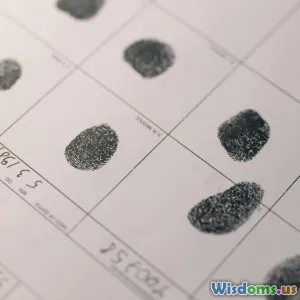
Digital Evidence in Crime Investigations
6 min read Explore the role of digital evidence in crime investigations and its impact on modern forensic practices. (0 Reviews)
Digital Evidence in Crime Investigations
In an era where technology permeates every aspect of our lives, the role of digital evidence in crime investigations has grown significantly. Digital evidence refers to data stored or transmitted in digital form, which can be a crucial element in criminal investigations. From smartphones to social media platforms, digital footprints can provide law enforcement with invaluable insights into criminal activities. This article delves into the importance of digital evidence, how it is collected and processed, and the challenges faced by investigators in this ever-evolving landscape.
What is Digital Evidence?
Digital evidence encompasses any information stored or transmitted in a digital format that can be used in a court of law. This includes:
- Data from computers and servers: Hard drives, cloud storage, and databases.
- Mobile device data: Text messages, call logs, photos, and app data.
- Social media content: Posts, messages, and interactions on platforms like Facebook, Twitter, and Instagram.
- Internet activity: Browsing history, IP addresses, and email communications.
In many cases, digital evidence can corroborate or contradict statements made by witnesses or suspects, making it a vital tool in building a case.
The Collection of Digital Evidence
1. Legal Considerations
Before collecting digital evidence, law enforcement must obtain the necessary legal permissions, which may include search warrants or subpoenas. Adhering to legal protocols is essential to ensure that the evidence is admissible in court.
2. Preservation of Evidence
Once legal permission is obtained, investigators must take steps to preserve the integrity of the digital evidence. This involves creating exact copies (or images) of the data to prevent any alterations. Digital forensics experts often use specialized software to ensure that the data remains untainted.
3. Data Extraction and Analysis
Extracting data can involve various techniques, from simple file retrieval to complex analysis of hidden and deleted files. Investigators often employ forensic software tools that can recover deleted information or analyze data patterns. This is especially important in cases involving cybercrime, where traditional methods may not suffice.
The Role of Digital Evidence in Crime Solving
Digital evidence plays a pivotal role in various aspects of crime solving, including:
1. Identifying Suspects
Data from digital devices can reveal a suspect's identity through various means, such as GPS location data that places them at a crime scene or communications that link them to criminal activities.
2. Corroborating Evidence
Digital evidence can serve to validate or contradict alibis. For example, timestamped photos or messages can provide a timeline of an individual's actions during the time of a crime.
3. Gathering Contextual Information
Analysis of social media interactions and online behaviors can provide context to a crime, revealing motives, relationships, and potential accomplices.
4. Cybercrime Investigations
In the realm of cybercrime, digital evidence is often the primary source of information. Investigators analyze malware, phishing schemes, and hacking attempts, requiring specialized knowledge and tools.
Challenges in Utilizing Digital Evidence
Despite its advantages, the use of digital evidence presents several challenges:
1. Rapid Technological Changes
The fast pace of technological advancement means that investigators must continuously update their skills and tools to keep up with new devices and software.
2. Privacy Concerns
The collection of digital evidence often raises privacy issues. Balancing the need for evidence with individuals' rights can complicate investigations and lead to legal challenges.
3. Data Encryption and Security
Many devices and applications employ encryption, making it difficult for investigators to access crucial information. Forensics teams must possess advanced skills to bypass these security measures legally.
Conclusion
Digital evidence is an integral component of modern crime investigations. As technology continues to evolve, its role will likely expand, presenting both opportunities and challenges for law enforcement. Understanding the significance of digital evidence, along with the legal and technical aspects of its collection and analysis, is essential for effective crime-solving in today's digital age. As we move forward, the collaboration between law enforcement and digital forensics experts will be crucial in harnessing the full potential of digital evidence in the pursuit of justice.
Rate the Post
User Reviews
Popular Posts




















